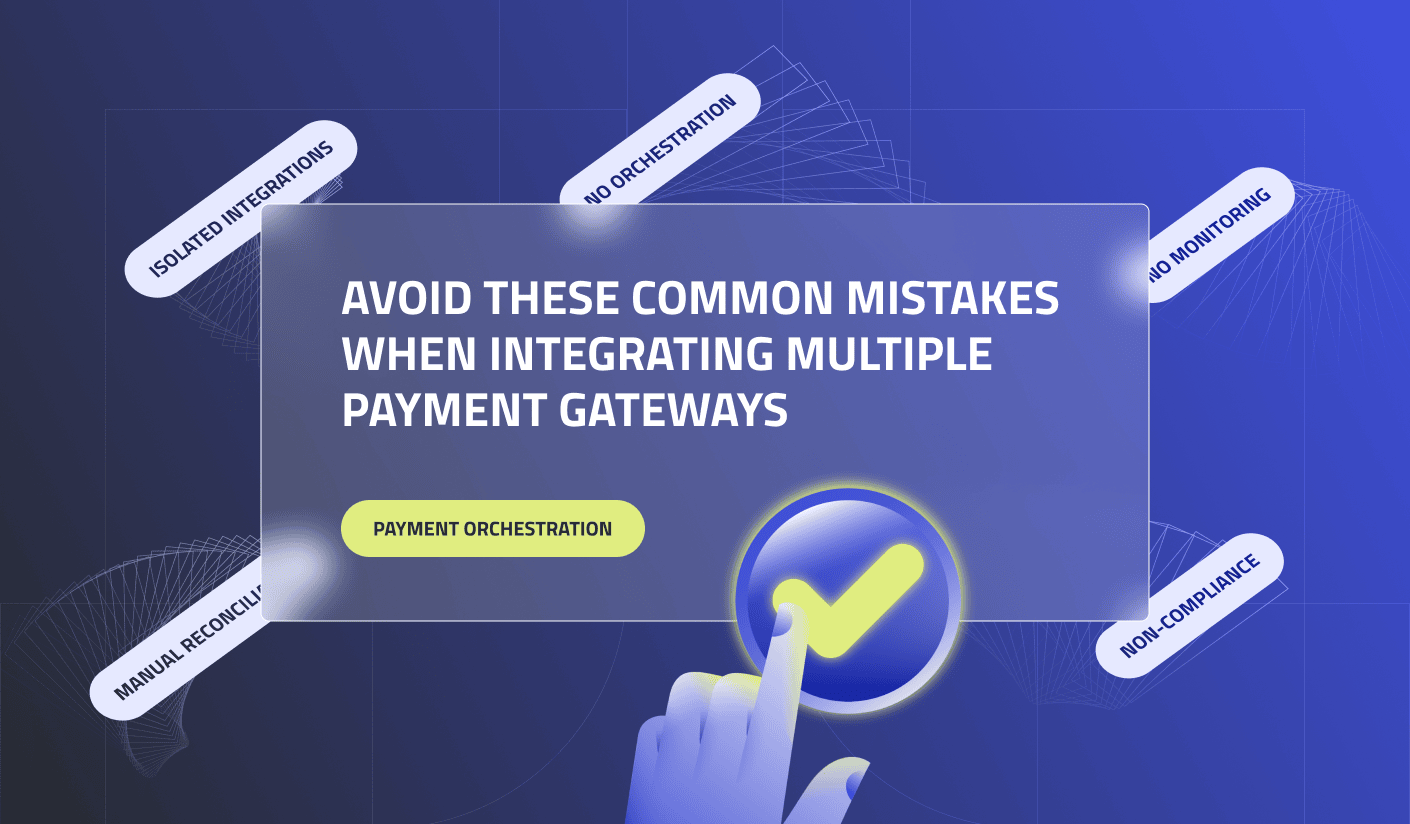Avoid These Common Mistakes When Integrating Multiple Payment Gateways
Learn how to avoid costly errors when integrating multiple payment gateways. Discover best practices with Yuno’s orchestration platform.

Integrating multiple payment gateways should enhance your business’s flexibility, customer reach, and redundancy. Yet, many companies fall into the same traps that lead to costly errors, longer time-to-market, or worse, failed transactions and lost revenue. In this guide, we’ll unpack the most frequent mistakes companies make during multi-gateway integration—and how to avoid them by approaching orchestration the smart way.
Why do businesses integrate multiple payment gateways?
To ensure a consistent customer experience across geographies, businesses often need to support different payment methods, processors, and currencies. Multiple gateways provide:
- Redundancy in case one fails.
- Higher approval rates when orchestrated with smart routing.
- Access to local payment methods for regional markets.
- Negotiation leverage across providers.
But adding more providers without a clear strategy can backfire.
What are the most common mistakes in multi-gateway integrations?
- Hardcoding connections: Many companies build one-off integrations to each PSP, which becomes a maintenance nightmare. Any change in a provider’s API can break the payment flow.
- Skipping orchestration logic: Without routing, retry, and fallback rules, transactions aren’t optimized. This leads to lower approval rates and missed revenue.
- No unified monitoring: Siloed systems make it hard to detect anomalies in real time. Fraud spikes or latency issues may go unnoticed for hours. Yuno solves this with real-time monitoring through Monitors.
- Delayed reconciliation: Managing settlements across providers without automation leads to errors, reporting issues, and month-end bottlenecks.
- Neglecting regional compliance: Payment rules differ per country. Missing a local requirement (like 3DS in Europe) can lead to declines or fines.
- Lack of fraud coordination: When fraud tools aren’t synchronized across providers, merchants see more chargebacks and false positives.
How does poor integration affect approval rates and customer experience?
Even a small integration error can cause a large impact. For example, not retrying a failed transaction with an alternate provider may lead to a lost sale. Or displaying irrelevant payment methods can frustrate users. Lack of smart routing and real-time optimization reduces approval rates by up to 20%.
How can orchestration platforms help?
A modern orchestration layer like Yuno solves these issues by:
- Offering a single API to manage 1,000+ global providers.
- Enabling smart routing, retries, and fallback paths.
- Consolidating monitoring and analytics in one dashboard.
- Automating reconciliation and cost optimization.
- Supporting local methods and compliance out-of-the-box.
- Integrating multiple fraud tools in a coordinated way.
What are best practices to follow during integration?
- Start with business goals: Are you optimizing for cost, approval rate, reach?
- Use dynamic routing: Adjust traffic by region, card type, or provider performance.
- Centralize reconciliation and monitoring.
- Choose providers based on performance, not just cost.
- Design for change: Your payment mix will evolve. Yuno's Checkout Builder makes it easy to iterate.
How does Yuno prevent these common mistakes?
Yuno’s platform includes pre-built connections to 1,000+ payment methods, advanced monitoring (Monitors), and intelligent routing to maximize approval rates. With a no-code dashboard, it eliminates the need to manually connect each PSP, and ensures updates don’t break your flows. Compliance features, fraud protection, and unified analytics are built-in—all with enterprise-grade security.


.png)

.png)









